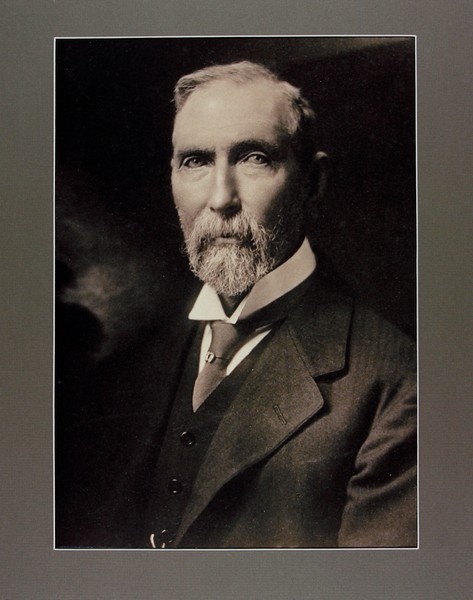Watson Shennan was among the first early Otago settlers to push on into the Central Otago hinterland. He was born in Galloway, Scotland, in 1835, one of 11 children in a farming family. In 1857, while still just 22, Shennan arrived in Otago with his brother Alexander aboard the Thomas and Henry. They immediately set off on an expedition into Central Otago in search of land to run sheep on. This pastoral ambition ran counter to the founders’ vision of Otago as an agricultural economy of small farms. Otago’s leaders had hitherto discouraged exploration inland. Sheep, however, were to make Otago’s fortune even before the discovery of gold.
The Shennan brothers found what they were looking for in the Manuherikia Valley, which they described as ‘a land of promise’. They returned to Dunedin and took out depasturing licences for 40,000 acres on two runs, which they named Galloway and Moutere. Taking their first flock of sheep inland in April 1858 the brothers were caught in a fierce snowstorm on the Lammerlaws. They then camped out on the treeless plain until huts could be built and had to guard their sheep day and night against the threat of wild dogs. It was physically and mentally gruelling work but demonstrated the potential of the land for sheep.
In 1861 Alexander Shennan went to Germany to buy pure-bred merinos from the King of Prussia’s prizewinning stud. He sent the sheep back to Otago where they began the merino breed’s history in New Zealand. Alexander remained in Scotland to study and died there in 1863, weakened by his many privations in the colony.
Watson also returned to Scotland for a time in the 1860s, but from 1869 developed Puketoi Station in the Maniototo into the largest merino stud in New Zealand. His flocks produced some of the finest wool in the world. He subsequently developed Conical Hills Station at Tuapeka and became a wealthy and esteemed country ‘squire’. In 1904 he retired to Dunedin and built a fine mansion ‘Threave’ on High Street. It was designed by Robert Lawson and still dominates the steepest part of the High Street hill. He died there in 1920, survived by his widow and three sons.

Watson Shennan